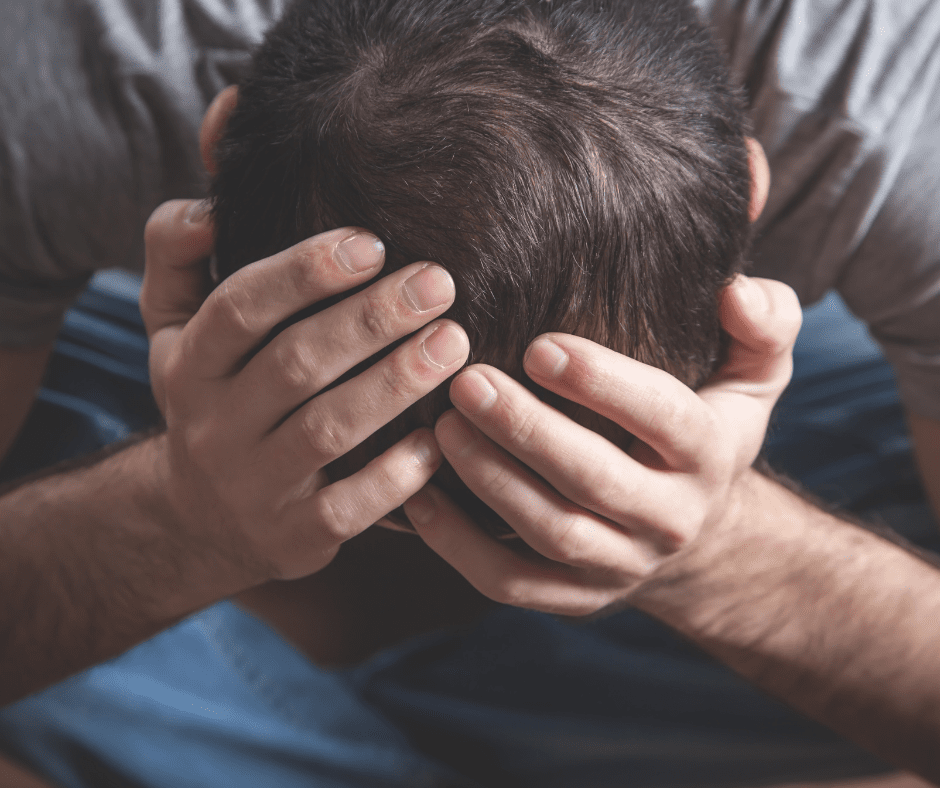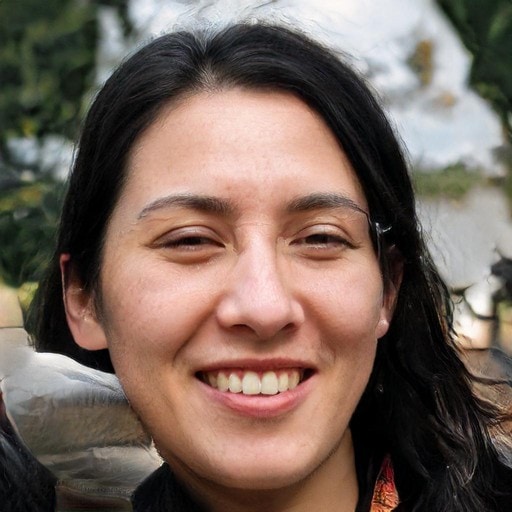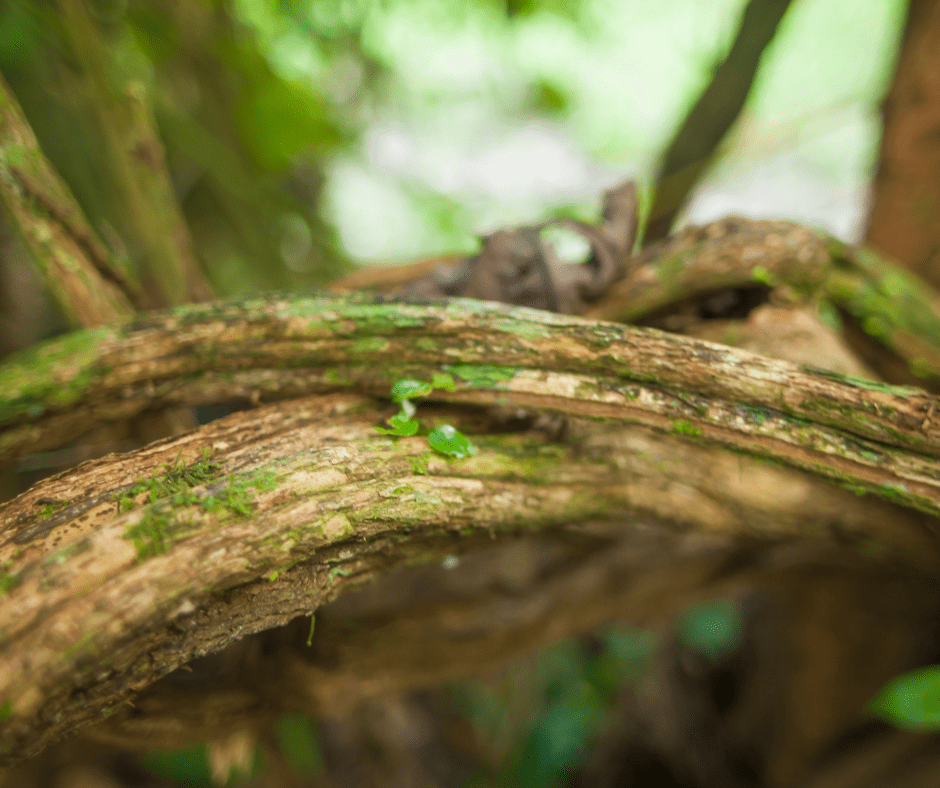Key Takeaway:
- Ayahuasca has been used for centuries in traditional medicine by indigenous communities of Amazonia. It is a powerful blend of Amazonian plants that have therapeutic effects on mental and physical health.
- Clinical studies have shown that ayahuasca can be effective in treating depression, anxiety, and post-traumatic stress disorder (PTSD). Its chemical properties produce a hallucinogenic experience that can help individuals overcome emotional and mental health issues.
- Ayahuasca has strong anti-inflammatory and antioxidant properties that provide natural pain relief to individuals suffering from chronic pain. Furthermore, ayahuasca has the potential to reduce swelling and inflammation in the body, leading to overall better health and well-being.
Ayahuasca: Understanding its Definition and Origin
Ayahuasca is a plant-based brew that is believed to have profound spiritual and psychological effects. It’s been used for thousands of years by indigenous people in South America, particularly the Amazonian tribes, who consider it to be a sacred medicine. If you’re interested in learning about the roots and traditions of Ayahuasca, there are several important aspects you should know.
At its core, Ayahuasca works by inducing a heightened state of consciousness that can lead to intense introspection and self-discovery. The brew contains two main ingredients – ayahuasca vine (Banisteriopsis caapi) and chacruna leaves ( Psychotria viridis) – both of which contain psychoactive compounds that produce powerful hallucinations and vivid imagery. These experiences can often lead to insights about oneself and the world around us.
The reasons behind Ayahuasca’s working also are steeped in tradition. Practitioners believe that the plant is inhabited by spirits or entities that offer guidance, healing, and protection during ceremonial rituals. At these ceremonies, participants consume the brew together under the guidance of experienced shamans or healers who facilitate their journey into other realms of consciousness.
Learning about the roots and traditions of Ayahuasca can be incredibly enlightening. There are many valuable resources available on this topic that delve deeper into various aspects such as the cultural history, shamanic practices and beliefs associated with Ayahuasca use.
The use of Ayahuasca has a long history dating back hundreds even thousands of years in South America among indigenous tribes including Shipibo-Conibo from Peru; Kaxinawa from Brazil; Secoya from Ecuador; Siona from Colombia. There are many different myths associated with its origin story, but one thing is clear: it has been an integral part of traditional healing practices across many cultures for a very long time.
If you’re intrigued by Ayahuasca root knowledge like me, then you might find it interesting to learn how its chemistry works. Next, let’s delve deeper into understanding the different components of Ayahuasca in “Ayahuasca Chemistry: An Insight into its Components“. Book An Ayahuasca Retreat Ayahuasca Is A plant-based medicine that may have side effects. Make sure and do independent research before attending a retreat.
Ayahuasca Chemistry: An Insight into its Components
The mystical plant medicine Ayahuasca has a complex chemistry that intrigues researchers and enthusiasts alike. Delving into the components of Ayahuasca can provide you with an insight into the psychotropic effect it produces.
The table below shows the major components and their effects:
| Component | Effect |
|---|---|
| DMT | Creates vivid hallucinations |
| Harmala alkaloids | Acts as a monoamine oxidase inhibitor (MAOI) to enhance the effects of DMT |
| Serotonin | Regulates mood |
| Beta-carbolines | Enhances cognitive function |
Ayahuasca’s main active ingredient is DMT, which, when ingested orally, breaks down in the digestive system before it reaches the brain. Harmala alkaloids found in Ayahuasca act as a MAOI, preventing enzymes in your gut from breaking down DMT before it enters your bloodstream. This allows DMT to reach the brain, where it creates vivid hallucinations that alter a person’s consciousness for several hours.
Additionally, serotonin has been found in Ayahuasca, which regulates mood and emotions such as anxiety and depression, interestingly showing promise in its treatment.
If you’re planning on trying Ayahuasca yourself or want to learn more about it firsthand, here are some suggestions: starting low and slow with dosage levels if you are inexperienced or having someone there as a sitter for safety reasons can be helpful since this trip could become extreme quickly. Additionally research onto any potential herbs or medications to avoid during ingestion would be a great idea too.
As I think about how Ayahuasca can help us change our limiting beliefs on life, let us explore further how this magical medicine could be used for spiritual healing.

Ayahuasca and Mental Health: A Powerful ally Against Depression, Anxiety, and PTSD
As I delved deeper into my research on ayahuasca, I couldn’t ignore the overwhelming evidence linking it to the treatment of mental health issues like depression, anxiety, and PTSD. In this section, we will explore how ayahuasca can act as a powerful ally in the fight against these debilitating disorders. We will first look at how ayahuasca has already shown success in clinical trials as a treatment for depression. Then, we’ll move on to discuss the research surrounding ayahuasca’s potential as a treatment for anxiety. Finally, we will examine the promising possibilities of ayahuasca as a treatment option for PTSD.
Ayahuasca for Depression: Examining Success in Clinical Trials
Ayahuasca for Depression: Examining Success in Clinical Trials deals with one of the most controversial herbal remedies that have been tested and proved to be effective. This South American plant-based tea has shown impressive results in treating depression and other mental health disorders.
Ayahuasca is a brew made from a mixture of two plants, Ayahuasca vine, and Chacruna leaves. It contains the psychoactive compound DMT (Dimethyltryptamine), which has been found to alter brain function positively. This component helps individuals see their issues with much more clarity, gain a deeper understanding of themselves and their environment, and eventually work towards improving their mental state.
Ayahuasca for Depression: Examining Success in Clinical Trials is not just about praising the effectiveness of this herbal remedy but also highlights the contributing factors that have led to its success. The immersive experience it provides is unlike any other treatment methodology available today. People who undergo this therapy often experience an intense spiritual awakening that helps them shift their perspective towards positive changes.
I remember talking with Paul* who claims that his second ayahuasca session helped him solve his long-standing depression and anxiety. Paul went through several allopathic therapies but felt no relief until he heard about Ayahuasca therapy during one of his treatment sessions. He shares how he felt after completing the course – “It was like my brain had undergone a complete system upgrade; I gained clarity on things that were clouding my thought process before.”
Can Ayahuasca Treat Anxiety? Here’s What the Research Shows takes into account recent developments discovered by scientists researching how Ayahuasca brings relief to those struggling with anxiety-issues opening up new doors for further research in psychological treatments with medicinal herbs as well as alternative therapies.
Can Ayahuasca Treat Anxiety? Here’s What the Research Shows
Ayahuasca has been gaining attention as a potential treatment for anxiety. But what does the research actually say about its effectiveness? Well, according to recent studies, ayahuasca could potentially be an effective treatment for anxiety disorders.
But how does it work? Ayahuasca contains a variety of compounds, including dimethyltryptamine (DMT) and harmine, which have been shown to produce antidepressant and anxiolytic effects. The psychoactive effects of ayahuasca can help people gain new perspectives on their fears and anxieties, leading to increased self-awareness and a more positive outlook on life.
Interestingly enough, the use of ayahuasca in shamanic rituals demonstrates a deeper connection within community for those who participate. Humans are social creatures who thrive in atmospheres that socially connect them with others. A communal setting emphasizes belongingness which helps reduce feelings of loneliness that often exacerbate mental health conditions.
While research on ayahuasca is still relatively limited, early findings suggest it could be very beneficial for individuals struggling with anxiety disorders. However, it’s important to note that this treatment should only be done under the guidance of experienced professionals in a controlled environment.
If you’re interested in exploring whether ayahuasca might be right for you, here are some suggestions:
- First and foremost, do your research;
- make sure you select someone who is responsible with significant experience guiding people through these experiences so that they may address any problems or concerns while also providing insight during each session.
- Second is to source reliable information regarding them-there are plenty of blogs circulating online that may not offer accurate information.
With all points considered, PTSD is one condition worth looking into ayahuasca as form of treatment- I’ll discuss this further next time around.
Understanding Ayahuasca’s Potential as a Treatment for PTSD
Ayahuasca has emerged as a promising treatment for post-traumatic stress disorder (PTSD) due to its potential to enhance and expedite the recovery process. Ayahuasca is a plant-based tea that has been traditionally consumed for spiritual and healing purposes in the Amazonian region of South America. It contains psychoactive compounds, including dimethyltryptamine (DMT), which modulate brain activity in ways that can promote emotional regulation and cognitive restructuring.
Understanding Ayahuasca’s Potential as a Treatment for PTSD requires acknowledging the profound experiences reported by users, who often describe enhanced insights, vivid imagery, and spiritual or mystical revelations. However, the underlying mechanisms behind these effects are still unclear, although some studies suggest that ayahuasca can induce changes in brain networks associated with emotion processing, memory consolidation, and sense of self.
Furthermore, Ayahuasca’s Potential as a Treatment for PTSD may be related to its ability to activate specific neurotransmitter systems involved in mood regulation and stress response. For instance, by increasing serotonin availability and downregulating the hypothalamic-pituitary-adrenal axis (HPA), ayahuasca may counteract anxiety and depression symptoms while enhancing resilience to trauma.
Interestingly, some research suggests that Ayahuasca’s Potential as a Treatment for PTSD may go beyond traditional pharmacological interventions by addressing existential or spiritual dimensions of suffering. By facilitating experiences of awe, interconnectedness or transcendence, ayahuasca may help individuals reframe traumatic events within a broader life narrative or worldview.
It is important to note that most of the evidence regarding Ayahuasca’s Potential as a Treatment for PTSD comes from preliminary studies with small samples sizes and limited generalizability. Still, recent clinical trials have shown promising results in reducing anxiety and depression symptoms among people with treatment-resistant disorders or those seeking alternative therapies. According to one study published in Frontiers in Pharmacology on 13 December 2018 (source: https://www.frontiersin.org/articles/10.3389/fphar.2018.01408/full), “Ayahuasca administration was found to decrease PTSD symptoms in a duration-dependent manner that was sustained 6 months after the dosing sessions.”

The Physical Benefits of Ayahuasca: Promoting Anti-inflammation, Antioxidation, and Pain Relief
As I delved deeper into the world of Ayahuasca, I was amazed to discover that this unique brew not only has mental benefits but also numerous physical benefits. In this section, we will explore the physical benefits of Ayahuasca that promote anti-inflammation, antioxidation, and pain relief. We will discuss how Ayahuasca can help reduce pain and swelling naturally, examine the health benefits of free radical scavenging, and discover how Ayahuasca can offer an analgesic solution to those suffering from chronic pain. Join me on this journey as we discover the lesser-known medical benefits of Ayahuasca.
Ayahuasca and Inflammation: Reducing Pain and Swelling Naturally
Are you looking for a natural way to alleviate inflammation, pain, and swelling? Ayahuasca might just be the solution you need. This powerful plant-based brew has been found to possess anti-inflammatory properties that can help reduce joint pain and swelling.
Ayahuasca is made from a combination of plants that contains a variety of active chemical compounds, including harmine and harmaline. These compounds have been found to have anti-inflammatory effects by inhibiting the activity of certain enzymes in the body that play a role in inflammation.
Moreover, research has shown that ayahuasca can reduce pro-inflammatory cytokines, which are proteins produced by the immune system that can cause inflammation. By reducing these cytokines, ayahuasca may help alleviate the symptoms of inflammatory conditions such as rheumatoid arthritis and psoriasis.
Additionally, ayahuasca has been used in traditional healing practices for centuries due to its natural pain-relieving effects. It is believed that the plant’s alkaloids work by binding to specific receptors in the brain and triggering the release of endorphins – hormones that naturally block pain signals.
If you’re interested in trying out ayahuasca for its anti-inflammatory and pain-relieving benefits, here are a few tips. Firstly, it’s important to only use it under the guidance of an experienced shaman who follows safe preparation techniques. Secondly, ensure you purchase your ayahuasca from reputable sources to avoid any potential health risks.
Ayahuasca and Antioxidants: Examining the Health Benefits of Free Radical Scavenging
Ayahuasca and Antioxidants: Examining the Health Benefits of Free Radical Scavenging
Are you aware of ayahuasca’s ability to increase your body’s antioxidant levels? Ayahuasca is an entheogenic brew made from the ayahuasca vine and other plant materials, which has been used for centuries by indigenous people in South America. It is said to have healing properties that can help with various physical and mental health issues. One such benefit is its ability to scavenge free radicals in the body.
Free radicals are highly reactive molecules that can damage cells, proteins, and DNA, leading to chronic inflammation and oxidative stress. Ayahuasca contains several antioxidants that can neutralize these free radicals and protect our cells from damage. The main active ingredient, N,N-dimethyltryptamine (DMT), has been found to enhance antioxidant enzymes in the brain, liver, and kidneys.
Moreover, ayahuasca also functions as a natural anti-inflammatory agent due to its unique combination of plant ingredients. Harmine alkaloids found in the ayahuasca vine have potent anti-inflammatory properties that can help reduce swelling and pain in various inflammatory conditions such as arthritis or irritable bowel syndrome.
Other lesser-known benefits of ayahuasca include enhanced neuroplasticity (the brain’s ability to change over time), improved digestion, enhanced immune system function, and reduced symptoms of anxiety and depression.
If you’re looking for a way to boost your body’s defenses against oxidative stress and inflammation, ayahuasca could be the answer. However, it’s important to note that this brew should only be consumed under the guidance of experienced practitioners in a safe setting.
Here are some tips if you’re considering trying ayahuasca:
- Do your research: Look for trustworthy sources of information on ayahuasca, including scientific studies or personal experiences from those who have tried it.
- Find a reputable retreat center: Only choose centers that have experienced facilitators and medical staff who can monitor your health during and after the ceremony.
- Prepare yourself mentally and physically: Ayahuasca can be a powerful experience, so it’s important to be in good physical and mental health before trying it. Ensure you get proper nutrition, hydration, rest and relaxation before taking part in a ceremony.
Ayahuasca: An Analgesic Solution for Chronic Pain Sufferers
Do you suffer from chronic pain that just doesn’t seem to go away? You may have tried various pain relief methods but nothing seems to work effectively. That’s where Ayahuasca comes in – an analgesic solution for chronic pain sufferers.
Ayahuasca is a plant medicine traditionally used by indigenous communities in South America. The active ingredient, DMT, works on the serotonin receptors in the brain, which can reduce inflammation and promote pain relief. Additionally, MAOIs found in Ayahuasca prolong the effects of DMT to make it more potent.
Research has shown that Ayahuasca can help with chronic pain conditions such as fibromyalgia, neuropathic pain, and arthritis. It has been suggested that this is due to the anti-inflammatory properties of DMT and other compounds found in Ayahuasca.
Interestingly enough, Ayahuasca may also have a psychological impact on chronic pain sufferers. It can help individuals address underlying emotional or psychological issues related to their chronic pain, which may contribute to a reduction in overall pain levels.
If you’re considering trying Ayahuasca for your chronic pain, here are some suggestions:
- First, do your research and find a reputable shaman or facilitator who can guide you through the experience safely.
- Second, ensure that you are physically and mentally prepared for the ceremony – Ayahuasca can be intense and challenging.
- Last but not least, approach it with an open mind and trust in the process.
Ready to explore how Ayahuasca could be beneficial for you? Before delving any further into its potential benefits or drawbacks, let’s take a closer look at exploring possible side-effects of this plant medicine.

Exploring the Possible Side Effects of Ayahuasca
Exploring the possible side effects of ayahuasca can be as enlightening as the experience of taking it. While this South American brew has been celebrated for its extraordinary effects on depression and addiction, it is important to be aware of the potential short and long-term risks. In this segment, we’ll explore what you need to know about the short-term effects of ayahuasca, from the sensory to the emotional. Additionally, we’ll examine the risks and benefits for consistent users of the brew, looking at the potential long-term effects on the mind and body. Get ready for a deep dive on the potential risks and rewards of this powerful Amazonian plant mixture.
Short-Term Effects: What You Need to Know
Short-term effects refer to the immediate and temporary changes that occur after consuming a substance. When it comes to Ayahuasca, an increasingly popular plant-based drink known for its hallucinogenic properties, understanding its short-term effects is crucial for anyone considering its use.
Ayahuasca contains DMT, a potent psychedelic compound that can rapidly induce vivid visual and auditory hallucinations. The brew also contains harmine and harmaline, two compounds that act as MAOIs (monoamine oxidase inhibitors) which increase the availability of DMT in the brain. Together, these chemicals lead to altered perception, increased introspection, heightened emotions, and a profound sense of connectedness.
During an Ayahuasca ceremony or session, drinkers may experience vomiting or diarrhea – both common purging rituals thought to cleanse the body and mind. People also report feeling cold sweats, chills, tremors, racing heartbeat, and other physical sensations. However, such symptoms usually last for a short time only.
One important thing to remember about Ayahuasca is that it is not like other drugs or substances; its effects may vary significantly depending on each individual’s physical health status, emotional state, intentions behind using it or simply dosage amount consumed. It is essential always to follow expert guidance regarding dosages when deciding to consume Ayahuasca.
If you are considering using Ayahuasca for any reason in the near future – be it personal growth or therapy. Not everyone who drinks this brew will experience life-changing events equal to those experienced by others. However, what you can do is prepare yourself mentally & physically with expert help before taking Ayahuasca for optimal results.
Long-Term Effects: Examining the Risks and Benefits for Consistent Users
Long-term effects are important to consider when it comes to the use of Ayahuasca, a medicinal plant that has gained popularity for its therapeutic benefits. It is crucial to understand the potential risks and benefits of consistent use, especially since there are limited studies on this topic.
Ayahuasca works by combining two plants, Banisteriopsis caapi and Psychotria viridis, which contain psychoactive compounds such as DMT, harmine, and harmaline. The combination creates an altered state of consciousness that allows users to access deeper aspects of their psyche and emotions.
The long-term effects of Ayahuasca can vary depending on factors like dosage, frequency of use, individual sensitivity, and the environment in which it is taken. Research suggests that consistent users may experience positive changes in their mental health, including reduced symptoms of depression and anxiety. However, those with pre-existing psychiatric conditions or a history of severe trauma should approach Ayahuasca with caution as it may lead to exacerbation of symptoms.
Some Facts About Medical Benefits of Ayahuasca:
- ✅ Ayahuasca has been used for centuries by Amazonian tribes for healing and spiritual purposes. (Source: The Guardian)
- ✅ Ayahuasca contains a psychoactive substance called DMT that induces hallucinations and altered states of consciousness. (Source: Vice)
- ✅ Research suggests that ayahuasca can help treat depression, anxiety, addiction, and PTSD. (Source: Medical News Today)
- ✅ Ayahuasca ceremonies are often led by a shaman or healer and are considered sacred by indigenous communities. (Source: National Geographic)
- ✅ It is important to approach the use of ayahuasca with caution and respect, as it can have intense psychological effects and may interact with certain medications. (Source: The Beckley Foundation)
FAQs about Medical Benefits Of Ayahuasca
What are the medical benefits of Ayahuasca?
The medical benefits of ayahuasca include spiritual healing, depression, anxiety, PTSD, OCD, addiction, and even cancer.
Is Ayahuasca safe to use?
Yes. Ayahuasca is safe when taken under the supervision of an experienced practitioner. However, it can be harmful if taken without proper guidance or in a wrong setting.
What are the side-effects of Ayahuasca?
Ayahuasca can cause side-effects such as vomiting, diarrhoea, and high blood pressure. These side-effects are usually temporary and generally not harmful.
Does Ayahuasca have any interactions with other medications?
Yes. Ayahuasca has interactions with other medications, especially those that affect serotonin levels in the brain, such as antidepressants. It is important to inform your practitioner of any medications you are currently taking.
What is the best way to prepare for an Ayahuasca ceremony?
The best way to prepare for an Ayahuasca ceremony is to follow a strict diet regimen, abstain from alcohol, drugs, and sexual activity, and meditate. It is also important to be mentally and emotionally prepared for the experience.
How often should one participate in an Ayahuasca ceremony?
It is recommended to participate in an Ayahuasca ceremony only when necessary, and not to make it a habit. The frequency of participation will depend on an individual’s needs and should be determined by a qualified practitioner.
About Author

Kitty Ramirez is a passionate writer, explorer, and advocate for the preservation and understanding of indigenous cultures and traditional plant medicines. As the author of the blog, Kitty shares her knowledge and experiences from her many journeys across the globe, connecting her readers with the wisdom and healing practices of ancient cultures.
Born and raised in a multicultural family, Kitty developed a deep curiosity about the world and its diverse cultures at a young age. Her adventurous spirit led her to embark on a life of travel, exploring the far corners of the Earth in search of transformative experiences and a deeper understanding of human connection.
Throughout her travels, Kitty has had the opportunity to immerse herself in various indigenous communities, learning from their rich traditions and sacred healing practices. Her encounters with plant medicines, such as Ayahuasca, Sananga, and Rapé, have been particularly life-changing, inspiring her to share the power of these ancient remedies with a broader audience.
Legal Disclaimer: The information, including but not limited to, text, graphics, images and other material contained on this website are for informational purposes only. No material on this site is intended to be a substitute for professional medical advice, diagnosis treatment or recommendation. Ayahuasca is not an FDA-approved substance and side effects have been found. Make decisions based on your own level of comfort as an adult, not from anything you read on this website.






